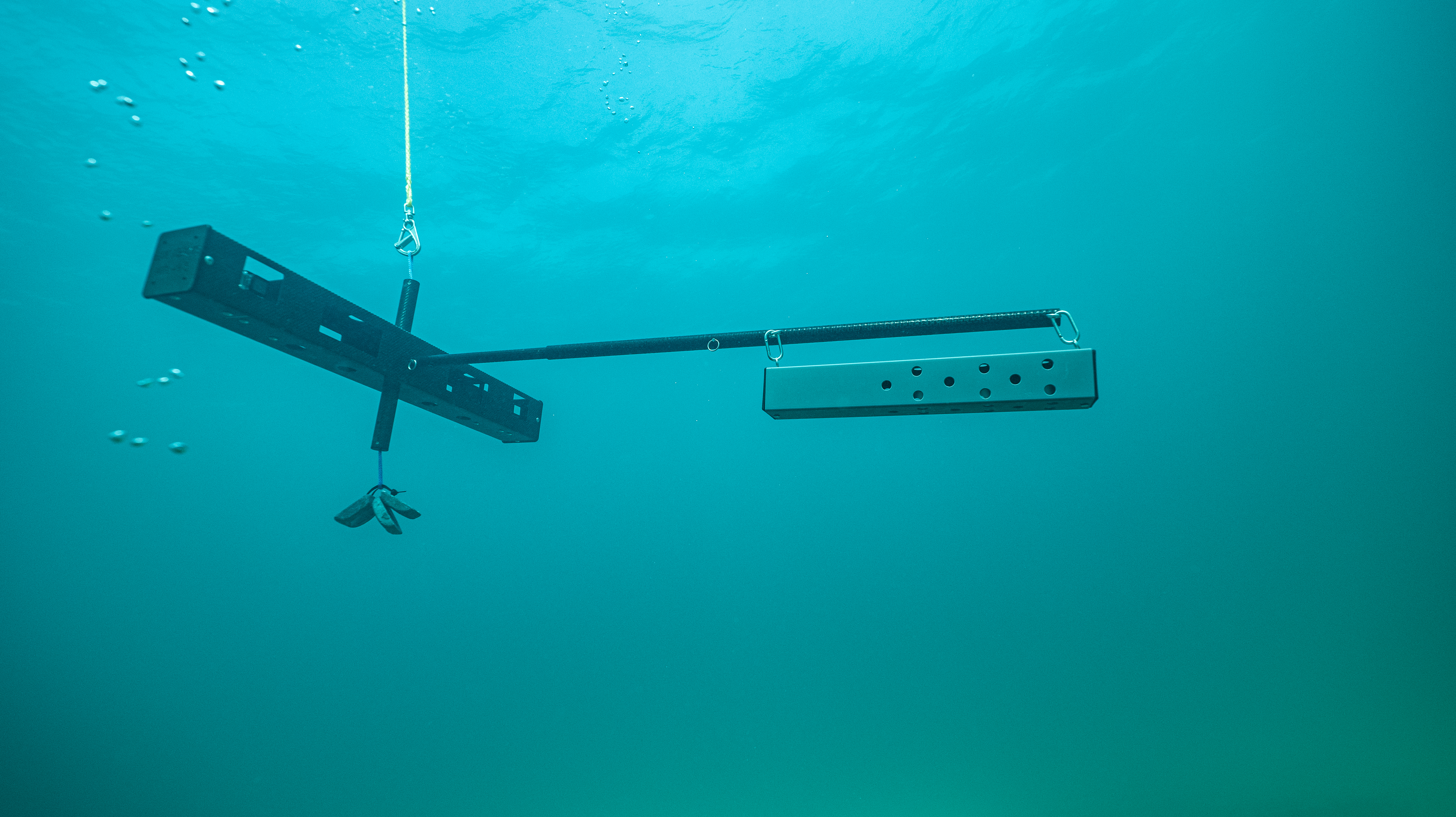
Prince Albert II of Monaco Foundation and Community Jameel partner with the Monégasque Association for the Protection of Nature and Blue Abacus to deploy remote underwater systems to measure marine wildlife in Mediterranean
Monaco
Press release
A new project is deploying remote underwater systems to document the status of marine wildlife in the waters of the Principality of Monaco, marking one of the first times this technology has been used in the Mediterranean Sea.
Launched by a consortium comprising the Prince Albert II of Monaco Foundation, Community Jameel, the Monégasque Association for the Protection of Nature and Blue Abacus, the technology company of Professor Jessica Meeuwig, a pioneer marine scientist based at the University of Western Australia in Perth, Australia, the project uses baited remote underwater video systems (BRUVS) to film, count and analyse populations of fish and other marine species. By conducting two surveys over the span of one year, the project will generate robust data to inform Monaco’s efforts to conserve marine wildlife and curb the environmental impact of dwindling marine biodiversity.
George Richards, director of Community Jameel, said: “This project combines Monaco’s long history of pioneering ocean science and combating climate change’s threat to aquatic environments, and Community Jameel’s commitment to leveraging data and evidence to tackling the effects of climate change worldwide. We are excited to be partnering with the foundation of HSH Prince Albert II of Monaco, the Monégasque Association for the Protection of Nature and Blue Abacus to deploy new technologies and generate new data to fight the decline of marine biodiversity in the Mediterranean Sea and beyond.”
Olivier Wenden, Vice-President and CEO of the Prince Albert II of Monaco Foundation, said:
“The Prince Albert II of Monaco Foundation is pleased to join forces with Community Jameel, Blue Abacus and the Monegasque Association for the Protection of Nature, with the objective of improving knowledge on the diversity of the species living in the deep waters of the Larvotto marine reserve. Supporting the development of scientific data through innovative tools is an essential condition for ensuring optimal protection of the marine environment. The cameras will enable us to develop our knowledge without disturbing marine life which, I believe, is a real added value.”
Jacqueline Gautier-Debernardi, director of the Monégasque Association for the Protection of Nature said: “I am very proud of the partnership established between the Prince Albert II of Monaco Foundation, Community Jameel and Blue Abacus, which will once again make it possible to launch innovative research programs in Monaco's MPAs. Indeed, although small in size and in an urbanised environment, they have the particularity of being real research laboratories in a natural environment. We have already tested numerous experiments there, made possible by the high level of monitoring they benefit from, and have proven the fundamental role they play in the preservation of biodiversity. The Blue Abacus program will bring new knowledge on fish populations, concerning deeper habitats such as sandy or rocky bottoms located between 40 and 50 meters deep inside and outside the limits of the Larvotto MPA, and will undoubtedly reinforce the data collected within the framework of the reserve effect, so important to emphasize the need to multiply MPAs along the Mediterranean coasts.”
Professor Jessica Meeuwig, co-founder of Blue Abacus, said: “We are delighted to be working with the Monégasque Association for the Protection of Nature, the Prince Albert II of Monaco Foundation and Community Jameel. The acquisition of BRUVS to document the status of marine wildlife in Monaco waters is an important step in rebuilding Mediterranean fish populations.
This major inland sea links Europe, Africa and the Middle East and its fisheries have been economically and socially important since ancient times.
The Blue Abacus BRUVS will be used to monitor the diversity, abundance and size of Monaco’s fishes, both inside and outside Monaco’s marine parks. This valuable information will underpin ongoing management.
The state-of-the-art BRUVS are built from carbon fibre and can be used on the seabed or suspended in the water column. In this way, they document the status of marine wildlife associated with the seabed like seabream and those, like tuna and swordfish, that travel the region. Video imagery also provides a fascinating and educational glimpse of life beneath Monaco’s sea surface.”
The Mediterranean has a unique biodiversity with important populations of several marine species including tuna, sharks as well as endemic and critically endangered species such as the Mediterranean monk seal. Marine protected areas across the region are few and some continue to allow for some forms of fishing within them. The image analysis conducted by the project will further broaden the knowledge of the local marine environment in the Mediterranean and allow for enhanced conservation policies to strengthen marine resilience in the face of climate change.